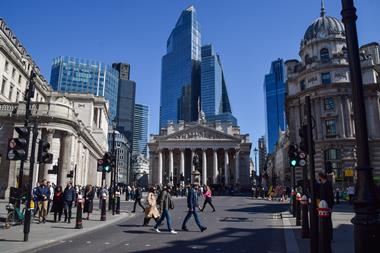After a decade of decline, crime is once again on the rise. Some reports, including a suppressed Home Office study last year, go so far as to suggest property crime will rise by up to 40% over the next three years. How much this is linked to police numbers falling since Labour came to power, is unclear. But for insurers, the crime revival poses a real headache.
To put the problem in context, even after a major fall in property crime through the 90s, Britain's property crime rate is still twice as great as America's. And, astoundingly, our violent crime rate is also greater than that of the States'. Providing cover for this magnitude of missing property or personal injury claims is an expensive business, despite the best efforts of insurers and their loss adjusters to deliver a more economic service.
This week's announcement by Home Secretary Jack Straw is welcome news all round. Straw is proposing that every town in the country has its own targets for cutting muggings, car crime and burglaries. By setting five-year targets, the Government believes that muggings can be cut by 17%, burglaries by 25% and car crime by 30%.
But these are ambitious figures - perhaps too ambitious. Senior Police figures are already casting doubt on whether they are achievable. The chairman of the Police Federation points out that his members' workload has increased by 40% over the past five years, and there are 1,000 fewer police officers than three years ago. As Shadow Home Secretary Ann Widdecombe says, "the thin blue line is getting thinner".
More investment in Police numbers is the obvious solution. But it's not Straw's approach. He claims eliminating inefficiencies will free up more resource, without having to recruit.
It's an argument that many in insurance will have seen at first-hand, and will reject flatly.
Yet if Government is not to increase funding, how can the crime figures be reduced? Once again, it looks like politicians are relying on the insurance industry and business to step up their anti-crime investment measures.
Certainly, these have proved very successful in the past. The dramatic reduction in property crime in the 1990s was largely due to the anti-theft devices on cars and windows that insurers have heavily encouraged - and the superior risk-assessment steps taken by many businesses. Initiatives like Crimestoppers and Neighbourhood Watch have also proved highly effective.
So private sector investment clearly has a major role to play in reducing crime. No insurer would deny that. But for the Government to hit its new targets, it must step up its own investment. As Insurance Times has noted before, it cannot be left to the insurance industry alone to solve the ills of society.
Hosted by comedian and actor Tom Allen, 34 Gold, 23 Silver and 22 Bronze awards were handed out across an amazing 34 categories recognising brilliance and innovation right across the breadth of UK general insurance.












































